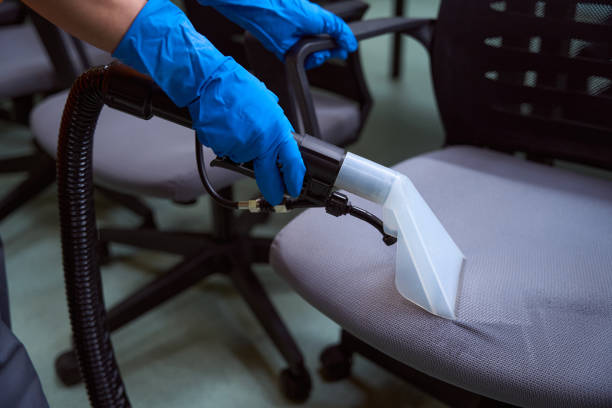Understanding Temporomandibular Joint Dysfunction: What You Need to Know
Temporomandibular joint dysfunction, often referred to as TMJ dysfunction, is a common but often misunderstood condition that can have a significant impact on a person’s life. As one of the most complex joints in the human body, the temporomandibular joint (TMJ) is responsible for the movement of your jaw, enabling actions like chewing, speaking, and swallowing. When something goes wrong with the TMJ, it can lead to a variety of symptoms, some of which may be hard to pinpoint. This article will take a closer look at TMJ disorders, the role of temporomandibular joint dysfunction specialists, and the importance of accurate diagnosis in treating orofacial pain.
What is Temporomandibular Joint Dysfunction?
Temporomandibular joint dysfunction refers to a range of disorders that affect the TMJ and the muscles that control jaw movement. It can manifest in a variety of ways, with symptoms such as jaw pain, headaches, earaches, facial pain, and difficulty opening or closing the mouth. The causes of TMJ dysfunction can be diverse, ranging from injury to the joint to systemic conditions such as arthritis.
Types of Temporomandibular Joint Disorders
There are over 30 different types of TMJ-related orofacial pain, which can make it challenging to diagnose the exact issue. These disorders are often grouped into three main categories:
Do you want to visit Char Dham? Char Dham Travel Agent is the best place to plan your Char Dham tour. You can book the tour from here.
- Myofascial pain – This is the most common type of TMJ disorder and involves pain and discomfort in the muscles that control jaw movement. It can be triggered by muscle overuse, stress, or poor posture.
- Internal derangement – This occurs when the disc that cushions the TMJ is displaced or damaged, leading to pain, clicking, or popping sounds when moving the jaw.
- Arthritis – Osteoarthritis or rheumatoid arthritis can affect the temporomandibular joint, leading to inflammation and degeneration of the cartilage.
In many cases, TMJ disorders can be a combination of these types, complicating the diagnosis and treatment process.
Why is Diagnosis So Challenging?
The challenge with diagnosing temporomandibular joint dysfunction lies in the overlapping symptoms it shares with other conditions. For example, pain from TMJ dysfunction can be mistaken for dental issues like tooth pain or even sinus problems. In some cases, a person with TMJ dysfunction may experience facial pain that mimics the symptoms of a facial migraine, leading to confusion about the actual cause of the pain.
Moreover, the presence of comorbidities such as osteoarthritis, fibromyalgia, or even neurological conditions can complicate matters further. These additional health conditions may mask or amplify the symptoms of TMJ dysfunction, making it difficult to pinpoint the exact cause of the pain.
Would you like to visit Indiar? A tour operator in India is the best place to plan your tour. You can book a tour from here.
A comprehensive diagnosis requires a skilled professional who can assess the symptoms in the context of the patient’s overall health. This is where a temporomandibular joint dysfunction specialist comes in.
The Role of Temporomandibular Joint Dysfunction Specialists
A temporomandibular joint dysfunction specialist is a trained healthcare provider, typically a dentist or physician, who has expertise in diagnosing and treating TMJ disorders. These specialists are experienced in identifying the complex array of symptoms associated with orofacial pain and can help patients navigate the often confusing diagnostic process.
Expertise in Diagnosis
Given that TMJ disorders can mimic other conditions, a specialist is essential for ensuring an accurate diagnosis. They are equipped with the knowledge and tools to differentiate between TMJ pain and other common causes of facial discomfort, such as tooth decay or sinus infections.
Would you like to visit Haridwar? Travel agents in Haridwar are the best place to plan your trip. You can book your tour right here.
The diagnosis process often includes a thorough review of the patient’s medical history, physical exams, imaging studies, and sometimes even diagnostic tests. This multi-faceted approach helps to rule out other conditions and confirm whether the temporomandibular joint is the source of the pain.
Customized Treatment Plans
Once a diagnosis is made, a temporomandibular joint dysfunction specialist can develop a customized treatment plan tailored to the patient’s specific needs. Treatment options can range from conservative methods such as physical therapy, bite guards, and stress management techniques to more advanced approaches like medications or even surgery in severe cases.
Some of the most common treatments include:
- Physical therapy: Targeted exercises to strengthen the jaw muscles and improve joint function.
- Occlusal appliances: These are custom-made mouthguards or splints that help reduce jaw clenching and grinding.
- Medications: Nonsteroidal anti-inflammatory drugs (NSAIDs), muscle relaxants, or even antidepressants can help manage pain and inflammation.
- Surgical intervention: In rare cases, when conservative treatments fail, surgery may be considered to repair or replace the damaged joint.
By working with a specialist, patients can access a range of options to manage their symptoms and improve their quality of life.
Beyond TMJ: Other Causes of Orofacial Pain
While TMJ dysfunction is a leading cause of orofacial pain, it’s important to understand that there are other factors that can contribute to this type of discomfort. Orofacial pain encompasses any pain in the face, mouth, jaw, and surrounding areas. It can stem from various sources, including:
- Neuropathic pain: Pain caused by nerve damage or dysfunction, such as trigeminal neuralgia.
- Neurovascular pain: Pain associated with conditions like migraines or cluster headaches.
- Systemic conditions: Disorders such as autoimmune diseases or fibromyalgia can manifest as orofacial pain.
Given the wide range of potential causes, a proper diagnosis is essential to ensure that patients receive the appropriate treatment for their specific condition.
The Importance of Seeking Specialized Care
If you are experiencing unexplained facial pain, jaw discomfort, or difficulty chewing, it’s crucial to consult a temporomandibular joint dysfunction specialist. Early intervention can help prevent the pain from worsening and improve your chances of successful treatment.
Specialists in this field have a deep understanding of the complexities of orofacial pain and can provide a clear diagnosis, recommend effective treatment options, and monitor your progress over time. They are also trained to work alongside other healthcare providers, ensuring that all underlying health conditions are considered in the treatment plan.
Conclusion: A Path Forward for Orofacial Pain Sufferers
The road to finding relief from temporomandibular joint dysfunction and other types of orofacial pain can be challenging, but it is not without hope. With the expertise of temporomandibular joint dysfunction specialists, patients can finally get to the root of their pain and explore targeted treatment options. Whether through physical therapy, bite guards, or advanced surgical techniques, effective management of TMJ disorders is possible.
If you or someone you know is suffering from persistent jaw pain, headaches, or facial discomfort, it’s time to take action. Consult with a specialist today and begin your journey toward a pain-free tomorrow.






